#like it doesn't matter if you want a symbolic film you need to create some build up for the viewer's to believe this
Text
Like look at another movie that was really weird and divisive with wacky visuals and sexual themes, just like men had: Beau Is Afraid.
Beau too was a fucking trip but in that movie we had an story. We had a starting point and an end goal. You'd even argue this is a vague take on the odyssey too. Sure it was kind of insane for better and for worse but all of its scenes and themes tied to a bigger picture.
MEN is so over the place trying to bring in so many details but refusing to give them a reason to be. In BIA at least you can go "Beau is hallucinating/living out his intrusive/paranoic thoughts" and it makes sense because if you have mental illness similar to him (I do) expecting the worst to happen is what you do, but here it's taken to 11 bc well he's imagining it a little too close. In MEN there's not a single semblance of an explanation on anything. They vaguely maybe imply paganism but I'm just making huge assumptions.
Like BIA is a movie that gives you stepping stones to tie it all together, while MEN is a movie where you just gotta write fucking fanfiction for any of it to make sense. And I'm so upset about it. -_-
#luly talks#MEN 2022#beau is afraid#also Beau didn't take itself too seriously. it was a comedy after all. surely the jokes didnt land for everyone but it at least knew they#weren't that serious#MEN plays itself completely straight#funniest thing was Geoff's joke 10 minute walk there 30 minute walk back that is probably just a super common old man joke#but i never heard it in my life so it had me laughing hars#like hell even the side characters in BIA are more than the ones in MEN. like i said before the only two we vaguely know something of are#the priest or deacon idc and uh. the green man. and w the green man it's mostly just speculations again#like it doesn't matter if you want a symbolic film you need to create some build up for the viewer's to believe this
6 notes
·
View notes
Text

( Transcript: The 5 Principles of Design For Entertainment )
INTRODUCTION
Before I get to giving feedback to your submissions I would like to make it perfectly clear from which kind of design philosophy I come from when addressing your designs. That way you can decide if the BuildGuild's approach fits into your preferences or not.
As I'm currently the only Mod active on the blog currently, I will of course only be able to argue for my approach and not for Chekhov's or any future mods, who will most likely publish a post about their own methods later. For now however, you're stuck with me for the time being.
As I come from a background in academia and with a focus on creating designs fit for the entertainment industry ( and the indie-industry subsequently ), I work on a basis of principles. I'll delve more into these at a later date ( or you can google them if you feel so inclined ), but for now I'll simply introduce you to the broader ideas so we're on the same page from the beginning!
"So, what's a design-principle?"
Almost no matter where you go in the world of design you'll be bound by the fact that your design must solve the problem it is supposed to adress to some capacity. In entertainment design, more specifically, for concept art and storytelling; that means that your design must be effective in communicating its desired purpose to the audience.
That might sound obvious to some. But you'd be surprised just how often even big and trusted film-companies or game-developers fail to make their designs effectively communicate their designated purpose to their audience.
To the rest of us, who need things explained more concretely, here's an example.
" A character that is set out to be a villain in a story, must be effectively be presented as one"
Similarly
" A plot revolving around a mysterious disappearance of a character, must be presented as mysterious"
Duh? You might be thinking. Of course I need to present my character's as their intended purpose in the story. That's the whole point of having characters!
But how do you ensure that you present your characters effectively? How do you make sure that everyone understands that your villain is a villain, and that your mystery is mysterious.
Sure you could write it all into your script.
The villain could be the most evil villain that ever did evil.
But often, good storytelling is in the subtleties. Maybe you even want to hint that your villain is a bad guy before they even turn to their evil deeds?
Principles of design help us ensure that we communicate the intent of our ideas clearly to the audience. Principles are recurring patterns in design which popularity have been re-enforced by their continuous effectiveness in communicating the intent of its subject ( a character design, environment, or plot-point).
That might all sound very abstract but to put it as simple as possible:
Principles are continuously proven methods designers use to make their designs work with their audience.
Note:
Principles are subject to change. Even variation across time and culture. So one designer might apply themselves to one principle, while others apply to another. Ultimately, it doesn't matter which principles you use, as long as they fit the audience and the purpose of your design.
If you follow a design principle that states that the colour white symbolizes purity. Then you can only make a successful design with this in mind, if your audience also agrees, that white represents purity.
Principles must also stay consistent throughout the entire design in order to be effective.
This blog will try its best to be open to the principles of other cultures and time-periods when presented with it. But until we get moderators or contributors from other cultures or generations, we'll be relying primarily on the current set of principles that the design industry in the west uses.
CURLS design principles

( Transcript: CURLS. Cohesiveness, Uniqueness, Recognizeability, Story )
Much to my regret, I do not have a methodology named after me yet. But I guess now is a good time as ever to shoot my shot. When I work with reviewing and giving feedback to any design, from an Art Director's perspetive, I work from a model I've come to refer to as CURLS throughout the years. This is also the model which I will be using when reviewing designs through our submissions.
CURLS is a set of parameters which encompasses parts of a design. Some of these parameters contains a number of principles, whilst others stand on their own.
When using CURLS, I'll be considering the proposed design and try to figure out if it successfully completes the parameters in my experience. The more parameters a design can adhere to, the stronger the design.
There's a number of ways for a design to fulfill a parameter. We'll get into some of them down the line, but keep in mind that design is all about trying all matter of ideas and combinations out and seeing if they work. Sometimes you'll run risks and they pay off, sometimes they don't. It's all part of the procedure. Getting things wrong happens just as much to professionals as it does to amateurs.
Here are some of the more common methods designers apply to their process when trying to make for strong designs ( and some that I consider to be viable ways to make a good design )
COHISIVENESS
- Stylistic cohesiveness
Stylistic cohesiveness is pretty self-explanatory. It is important that your design looks like it applies the same style across its entire self ( unless of course the point of the design is to straddle multiple styles, but even then - it must still look somewhat put together so that it makes it absolutely clear that the difference in stylistic choices is intentional)
A design that doesn't work to maintain stylistic cohesion can easily come off as unfinished or sloppy, so make sure everything looks like it belongs together.
- Viewer comprehension
Your design should be easy for your audience to read. You need to guide their eyes intentionally through the design by using shapes, colours and contrasts to provide a clear and understandable path through it. This doesn't mean that you have to make your designs overly simple or static. You can still make a design complex and readable by studying ways to compose your design ( such as grouping certain colors together, having patterns face certain directions or recognizing the flow of volumes, more on these methods in a later essay).
- Design cohesion
Lastly for Cohesiveness, your design needs to stay true to its own principles. If you've used shape language in parts of your design to indicate some kind of function or feeling, then you must use shape language throughout the rest of the design as well. Otherwise, the shape language used can be nullified by the parts that do not apply to that principle.
Similarly, if you use a certain pallette to indicate wealth and sophistication ( say, green and black ), and suddenly switch halfway through the design to another pallette that does not consider colour symbolism, you will have damaged the integrity of your first pallette.
UNIQUENESS
Uniqueness; it is in the name.
There's a million stories out there and even more designs to accompany them. Standing out from the crowd is important if the design is to be noticed and remembered.
Though, sometimes you don't have to re-invent a whole fantasy race for your design to look unique. Sometimes it is simply the combination of little things. A blue orc with excessive amounts of fine jewelry. An alien at the Rio Carnival. Even something as novel as using different shapes in combination with obscure pallettes can be enough to make your design stand out!
RECOGNIZABILITYH
- Sihlouette
If you have ever heard anyone talk about concept art before, you probably know that for character design, sihlouette is incredibly important. Though it is also very important when it comes to prop design or even environmental design.
Making something recognizeable by its outline alone helps make the character read much better when you start designing it in detail.
It also means your audience can remember your design's iconic shape from a distance or perhaps even when hinted at through other designs.
- Pallette
Just like the silhouette, a strong and recognizable palette can help make your characters memorable, even when out of the context of your universe, story, game, etc.
You can combine this with color symbolism to enhance your audience's connection to the character's palette.
LINE MILEAGE
- Format / purpose vs complexity
A term coined by the animation industry back when the films were drawn frame by frame.
Line Mileage refers to the total amount of time it takes for an artist to fully draw a character or element. They used this term to define whether or not an idea was properly designed to fit the production and its deadlines. A character design loaded with details and props would probably have a very high Line Mileage, which meant it would take a lot of time to draw it, which in turn could slow the process and risk running out the deadlines.
A character design with a Low Mileage however would be quick to draw and could safely be introduced to the animation team without any worries about whether or not they could make it to release date.
When using CURLS, I consider Line Mileage a little broader than just animation. But the idea stays the same. A measure as to how long you need in order to be able to draw the character. You're allotted mileage differs from medium to medium. If you're using the design for sporadic illustrations or a low-volume storybook, then you can probably get away with higher mileage than with a design that would be meant for a comic.
Scaling the level of details on your character is a huge challenge even for professionals occasionally. It often takes multiple edits before you've narrowed your design down to something that's appropriate for your medium and your deadlines.
STORY
- Shape Language
Another principle some designers subscribe to is the impact of Shape Language in their design. Shape Language proposes that basic shapes: the square, the circle, and the triangle all invoke certain feelings in the audience when they see them integrated into a design. Particularly character designs.

Square: Strength, Stability, Conservatism, Studborness. Circle: Friendlyness, Hospitality, Gentleness, Maternity. Triangle (pointing up): Danger, Ambition, Aggression, Tension. Triangle (pointing down): Dynamism, Speed, Radicalism, Determination.
Using these shapes consciously to communicate the feeling your audience should get for the character without having to hear their motivations spoken outright can leverage your design from 'functional' to 'effective'.
Optionally: designers have also used Shape Language to defy the principle and provide a twist to their characters.
- Colour palette
Similarly to how shapes can invoke a sense of a character or an object, so can colours. Depending on which culture you're from, colours will symbolize a variety of things. In the west, we often refer to red as the colour of love. But it is also the colour of war.
Blue is often associated with the tranquillity of the sea, but it can just as well lead our minds to large corporate billboards.
Colours and their meaning are often impacted by the context they're in, so keep this in mind when you design with them.
Using a green similar to the dollar-bill invokes a sense of wealth, while using the green from blooming flowers pulls the imagination to a flower field in spring.

Red: Passion, Violence, Vigor, Life. Blue: Calm, Trust, Intelligence, Stability. Green: Nature, Energy, Hope, Greed. Yellow: Optimism, Creativity, Cowardice, Sickness.
- Details
Certain details on a design can provide hints to its story and purpose. A specific scar somewhere or a unique prop in the hands of a character gives us information about the design without any exposition being needed. This should be used somewhat in moderation. Particularly in character design: too many important details can clutter up your design. This makes it hard for the audience to know which detail is important for them to notice and which they can ignore on first glance. So select only details that you deem are integral to the character and pour your love into that.
These are the parameters that I will be referencing when providing feedback for your pieces and answering your questions.
As previously mentioned, it is only my personal approach and not the only or 'right' way to do it, nor is it any kind of industry standard.
But I hope by following CURLS I can provide at least, thought-provoking and consistent feedback, that you may be able to take with you in your future creative works.
I look forward to seeing your designs and talking to you all about design!
Mod Wackart ( Donate )
Portfolio
105 notes
·
View notes
Text
Part 2 - Basic Concepts of Miraculous Ladybug: Kwami
Kwamis are a fun concept and one of the main draws of the series. They make sense story-wise because, firstly, our characters need some support system. And since a lot of conflicts are centred around secret identities, characters should be able to discuss their double life with someone. As magical beings they could also be used to expand the lore, introduce new concepts and drive forward both the plot and character development. It doesn't always happen but Kwamis are a good idea. Some people who write AU's think that Kwamis are redundant, but I have to disagree.

Origins and nature
Where do Kwamis come from? What are they? It's never explained. Oh wait, it was explained in a comic people can accidentally find. You decide to explain the origins and nature of magical beings who are one of the key elements in your magic system and worldbuilding IN A SIDE COMIC, which has zero effect on your main story. Sounds legit.
Here it is.

So, Kwamis are abstract creatures. They can become tangible and interact with the world because of the miraculous jewels. Essentially, each Miraculous acts as an anchor to the material world for Kwami. They existed since the beginning of time and were invisible observers of the universe. Until they settled on Earth and observed how humanity came to be. This is where things get interesting.
Kwamis are the embodiment of abstract concepts. But, some abstract concepts were created by people (like everything mentioned in the comic: beauty, math, love, etc).
Kwamis wanted to help humans. And then, a human, who couldn't see, hear or touch a Kwami creates miraculous jewels. And now these beings can interact with the world, use their powers and grant them to humans. Yet, they are completely under control of their holder. I'll discuss it later, but why did Kwamis accept this deal? They are practically enslaved. At the same time they care about people and generally love humanity.

According to the wiki Kwamis grant powers because of "the privilege of having the ability to be perceived by mortals". What? Did I read that right? Kwamis agreed to be enslaved and used as a power source, because they wanted to interact with material world. That's it, guys, end of the story.
We also know these things about nature and abilities of Kwamis from the show:
1) need food, but only to provide the power for the holder;
2) can't phase through precious metals (Chloe's bracelet in "Rogercop"), their own miraculous and humans;
3) they can control if they phase through things or not – meaning that if they want to, they can (this way Tikki can stay in Marinette’s purse without much trouble and Plagg sleeps on Adrien’s pillow);
4) they can perform magic without a holder but they don’t control it very well, there are certain types of things that they can’t do without a holder;
5) they are immortal but can get sick for some reason, a non-magical reason mind you;
6) technology can't detect them in any way, you can't film, photograph or record their voices (writers establish this many times, but promptly forget all about their own rules in "Optigami", where Marinette talks with Kwamis over the phone without any problems).
If I missed something important, then let me know.
Look, the questions related to origins and motivations of Kwamis might not be very prominent in your story right now, but you must answer them in case you might need to involve these facts in the plot down the line. It's important to avoid contradictions in the serialised story with liquid plot, that can't be set in stone. It's a made up world for the sake of everything sacred! You can make up explanations and rules, of course as long as they don't contradict common sense.
Plausible ideas for origins and nature of Kwamis:
1) Kwamis are immortal spirits, whom humans accidentally summoned and bound with spells to Miraculous stones. They remember their existence before this. This version doesn't really explain their desire to serve people and love for humanity, however. It would be more logical for Kwamis to resent people for enslaving them. It doesn't explain how humans could create those spells and Miraculous stones either.
2) Kwamis are physical manifestations of abstract concepts who existed simply as fragments of matter for a very long time without sentience, until they were accidentally summoned through the Miraculous stones and bound by humans to serve them. Kwamis do not remember their existence before Miraculous. In this version Kwamis serve humans and love them because they have never known a different kind of existence. Unfortunately, it doesn't provide any explanation on the creation of Miraculous and spells.
3) Kwamis are gods, who created the universe with all its elements and concepts including humanity (similar to Valar and Maiar in Tolkien's Legendarium). They wanted to help their creations but discovered that their power was too wild and unpredictable for that. So, Kwamis decided to give up their free will and magical independence to help humanity. Together they created Miraculous stones for humans to use and sealed themselves inside. Kwamis as gods were abstract concepts, who didn't have a body. The act of sealing their power in the Miraculous gave them an opportunity to interact with outside world (an anchor) and each Kwami chose an small animal form (because humans easily formed bonds with animals, had animal companions (pets), small animals look non-threatening and familiar). Kwamis intentionally choose certain animal forms to suit the human symbolism. Humans later used magic that Kwamis discovered for them to place spells upon small gods (spells related to identity protection and so on). This version answers most questions, but if Kwamis are gods then powers they grant to people seem to be rather small.
Feel free to add more. I would be interested to hear your ideas.
Identity Protection
In "Origins" we learn that Wayzz can sense the aura of Butterfly Miraculous, a negative aura of activated Butterfly Miraculous, to be more precise. And yet, Tikki and Plagg are genuinely surprised to discover the identities of their holders in "Dark Owl". There are several things wrong with that.
Can Kwamis sense each other's presence? They shouldn't be able to do this to protect the identities of their holders. On the other hand, they are ancient spirits. So, their inability to sense each other seems weird. Unless it's the same situation as with the spell that does not allow them to speak the name of their holder aloud.
But if they can sense each other like Wayzz did, then it means that Plagg and Nooroo were living in the same house for over a year and nothing happened. I mean, Plagg could have just come upstairs, take off the brooch from Gabriel, while he is asleep and return it back to Fu.
This question lies right here, on the surface. And that's only one massive and very obvious plothole. How to fix it? Establish that Kwami can't sense each other for identity protection. In "Origins" Fu meditates on his balcony and Wayzz sees a charged Akuma flying by. That's how they discover that Butterfly is in Paris and the Miraculous is in the wrong hands. Perhaps, Gabriel akumatizes someone for the first time to survey the surroundings and general public is not aware of this. This works better in the narrative, giving Fu time to select holders for Ladybug and Black Cat. It also establishes whether Hawkmoth can remove the Akuma from someone without Ladybug and discharge it. Maybe it depends on the circumstances (sometimes he can, but if this person was akumatized many times or their emotions are too strong and their mind doesn't want to let Akuma go then Hawkmoth can't pull the butterfly out with his magic). This scenario allows for Volpina to happen on "Heroes' Day". Silly recurring Akumas like Gigantitan and Mr. Pigeon could still happen. In this case Gabriel didn't want to akumatize the guy more than 70 times on purpose. It just keeps happening against his better judgement because evil butterflies are automatically attracted to Mr. Ramier. This way repeated attacks of Mr. Pigeon annoy Hawkmoth just as much as they do the heroic duo of Paris (I did not sign up for this Nathalie!).
Let's come back to the spell mentioned earlier for a moment. Kwamis can't say the name of their current holder out loud, but apparently, they can exploit a loophole in the spell by confirming the identity of their holder in another way. The spell doesn't work with other holders. Kwami can say the names of other holders if they know their identity. That being said, can the holder order the Kwami to tell them the identities of other heroes if they know them?
Kwamis know how each Miraculous looks with or without camouflage. Can the holder order the Kwami to tell them how each Miraculous looks in disguise (I liked that Grimoire doesn't have pictures of camouflage for identity protection)? Guardians can recognise Miraculous in any mode (Su Han). Did Fu teach Marinette this? Does she know how each Miraculous looks like unactivated?
Oh! Since we are discussing camouflage, let's take a moment to appreciate the Mother Of All Plotholes. Plagg didn't recognise Peacock because of the plot.
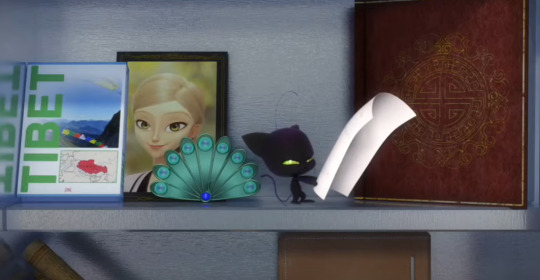
Relationship with Holder
I absolutely loved the idea that Kwamis must obey their holder introduced in "Sandboy". This concept opens tons of plot opportunities. It's such a great idea that makes sense, has potential, can create conflict. Why, oh, why didn't writers develop it more?
Like, it was so good. It can be a great push for character development. This concept resolves so many existing inconsistencies within the plot. It's mind-blowing.
Why can't Nooroo simply leave Gabriel, so that he wouldn't be able to transform? Because Gabriel bound him with Miraculous to always stay near.
In "Sandboy" Tikki asks Marinette's permission before going to the meeting. Plagg lies to Adrien instead. This implies that usually Plagg's holders weren't kind to him or feared his power (Su Han's remark in "Furious Fu"). Perhaps, his holders were taught to keep the Kwami of destruction under constant control. So, Plagg in turn has learned not to ask, because if he doesn't ask permission then his holder can't deny him freedom with magic.
Can Kwami lie to their holder? Maybe they can't lie to their holder about their nature, origins and powers and other Miraculous (but Kwamis can't reveal the location of Miracle Box, Guardian's identity and can't confirm identities of other holders known to them in any way). Kwami would be forced to speak even if they don't want to. That's why Nooroo told Gabriel everything about the abilities of the Butterfly Miraculous and the wish secret of Ladybug and Black Cat.
But Kwamis can lie to their holder according to Plagg in "Sandboy". If Kwamis can lie about everything (including powers) then Nooroo didn't have any reason to be honest with Gabriel way back in "Origins".
Speaking of Gabriel and Nooroo. Can Kwamis harm their holder? Maybe doing so would harm the Kwami as well. Can they do it only when the holder is not wearing the Miraculous? Can Kwami take their Miraculous from their holder? Will they disappear if they try to do so? It seems like Kwami disappears only when the holder takes off the Miraculous with the intention of renouncing power, the words "I renounce you" are not necessary.
Other Kwamis can take the Miraculous from people if it's not their own (Wayzz in "Feast"). But what if it wasn't possible. Imagine what could happen if it's not possible to take the Miraculous by force from the transformed or untransformed hero. Just like Lady WiFi couldn't remove Ladybug's mask. A person has to willingly give up the Miraculous. Only in this case, it's possible to take it. For example, somewhere around the middle of season 3 Hawkmoth could have trapped Ladybug and Chat Noir and cut off any escape routes. His Akuma tries to take both Miraculous, but they don't budge. Then afterwards, every Akuma tries to manipulate the heroes using hostages, illusions or mind control. It's hard to say whether this version will be better than canon, but it's a fascinating theory.
You can use the idea of obedience to create more situations contrasting the relationship of Plagg and Adrien, Gabriel and Nooroo. I liked how canon created a storyline about Plagg learning to control his powers without a holder and Adrien helping him. However, why would you stop here? Give us some flashbacks about Plagg's previous holders, tell us what kind of people they were. Expand the lore and add some character development for Plagg and Adrien. The same thing goes for Marinette. What kind of battles did they have in the past? What kind of people past holders were? Did Ladybug and Black Cat heroes always get along well? Were they allies or enemies? Were they always lovers?
Give us more information about Butterfly and Peacock holders. Perhaps Nooroo has dreams about his past holders who were good people. Show us what kind of things a Butterfly holder with good intentions can do. Tell us more about Duusu and her past holders, sprinkle in a few bits of info about Emilie and Duusu's relationship, just a few vague hints to preserve the mystery. You have a lot of screentime each season and instead of doing filler episodes dedicated to love drama, you can use them for developing minor characters, relationships between them and lore.
#miraculous ladybug#ml#miraculous analysis#miraculous meta#ml meta#ml analysis#miraculous transformations#miraculous critical#miraculous ladybug critical#miraculoustalesofladybugandcatnoir#kwami#miraculous kwamis#miraculous holders
65 notes
·
View notes
Text
I've ranted about this so many times on main that I need to say it here:
The idolization of classical music is not just racist and sexist, it is blatantly ageist
Coming from a huge music nerd this is important for me to say: BEEHTOVEN IS BAD AND MOZART IS WORSE. I dont even know if other pianists are aware of the way we've been brainwashed by Europeans but Beehtoven and Mozart were mediocre at best for average musicians, and for musicians who stood the test of time, they are TERRIBLE.
These two musicians, and most pre-1900s classical musicians in general, are only so famous because they are meant to symbolize the pinnacle of white society and the achievements of whiteness. I like Monet, I like Tchaikovsky, but if that's the best we can do then white people should not do music.
Wanna see a dumb person say dumb shit?
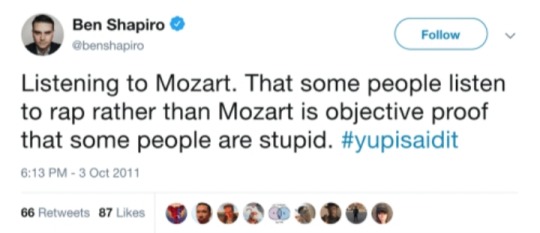
Who is some people? Tell me right now who do you think some people are?
I love this tweet because it so perfectly encapsulates everything that older white people believe. So many people (mostly white and old, #yupisaidit omg I'm so unique) talk about rap being the cause of gang violence, black on black crime, younger people having lots of sex and doing drugs. Imagine believing that the music young people listen to and black people create (and I can get into the exchange of black culture and youth culture at a later date) is an epidemic.
It's funny because that happened all throughout the 19th century.
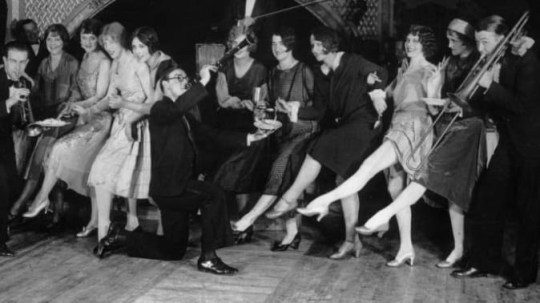

(Above: "flappers" aka rebellious young women who liked to party and listen to jazz -im not kidding that's literally what a flapper was - of the early 1900s dancing in what were considered short and scantily clad dresses for the time, then another picture of flappers posing for a picture with their boyfriends)
In the early 20th century teenage girls and women in their 20s became so famously known for having more sex, drinking alcohol, being unashamed to dress in shorter skirts, that the term designated to them by older white men - flapper - is now considered a historical term. And you've DEFINITELY seen old films depicting black jazz musicians as illiterate speaking in slang always cheerful with a bunch of other gross stereotypes given to them. No one liked jazz and no one like ragtimes.
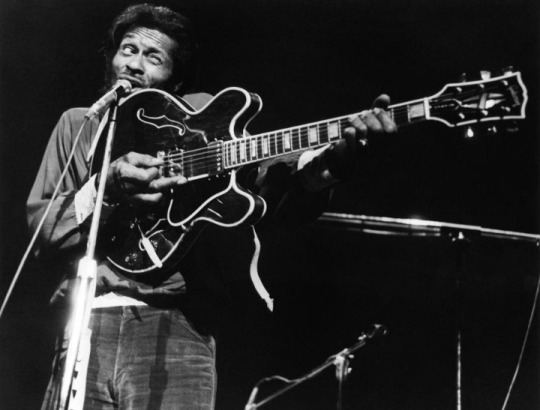

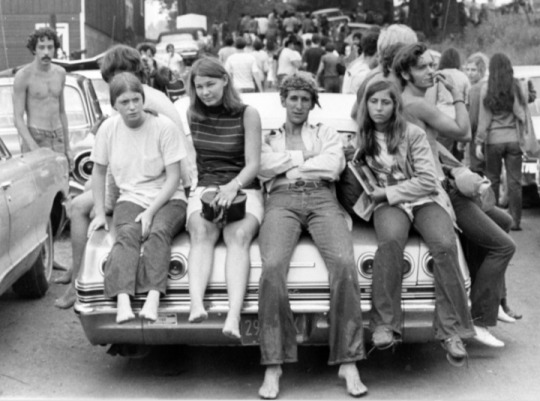
(Above: Chuck Berry onstage, Little Richard in a cover photo -both black- and a bunch of white teenagers in the 60s posing on jeeps and pontiacs trying to look punk and cool)
I feel like it should be known by now, Elvis is not the king of rock, most white rock musicians were highkey appropriative and when young black popular music switched to blues white rock musicians tried to follow suit inconspicuously for profit. I'm mostly basing my info of rock and blues on Peter Guralnick's Feel Like Going Home, which isnt the most progressive book you could buy but if you're looking for a comprehensive musical history of the 1950s onward focusing on how young white people rebelled against their parents by participating in black culture, you should definitely read it. Guralnick described how as a young white kid he and his friends would listen to rock all the time, and try to dress in fancy outfits and pose the way Elvis posed, sort of trying to look and behave the way they imagined black people look and behave (again its not the most progressive if could be). Adults constantly judged youth for listening to rock, and all the new kinds of music that came with it that were created out of black culture.
"The first time I heard Little Richard's 'Tutti Frutti' was on the car radio on the way to school.
A-wop bop a lu bop a lop bam boom
Tutti frutti, oh rooty
Tutti frutti, oh rooty
It burst out at us. Our first reaction, I think, was one of chagrin. Somebody's father was driving, and he expressed our discomfort before we could ourselves. 'What command of the english language,'he said and switched stations. We all laughed self-consciously because it was, after all, our fault."

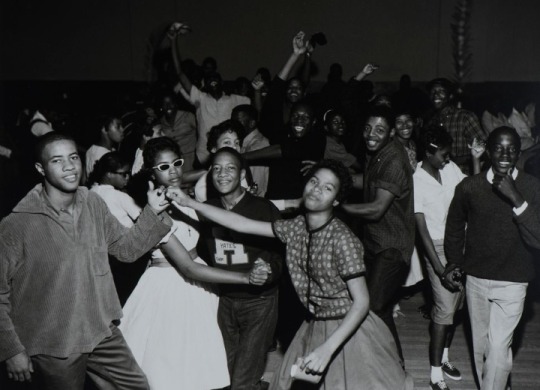
(Above: Mamie Smith on an album surrounded by black men on trumpets and various brass instruments. A party full of black teenagers listening to rhythm and blues.)
Rhythm and blues was another form of music pioneered by black people and exchanged with youth culture, and put down as a way to dismiss both identities. Again, from Feel Like Going Home:
"Country blues, which was at first considered too disreputable to record, remains to this day too funky in a pejorative sense to merit serious attention."
"These blues were common property long before they were set down on paper, however, and if the recording of the classic blues singers stimulated a new period of growth for country blues, WC Handy himself admitted, 'Each one of my blues is based on some old N**** song of the South, some old song that is part of the memories of my childhood and my race. I can tell you the exact song I used as the basis for any one of my blues.'
Instrumental jazz started out as the articulation of that same feeling, an ingenious approximation of the human voice."
And eventually the music was used by youth as a way to rebel.
"We thought of blues, when we first took it up, as protest music."
Which brings us to hip hop, rap, trap, and the like.

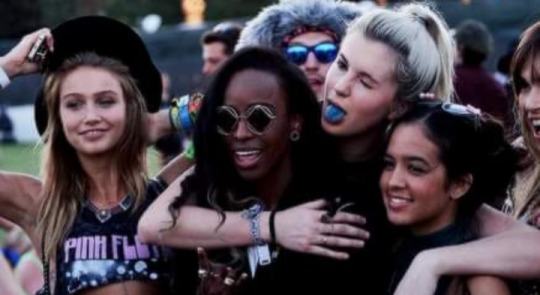
(Above: Duckwrth in his music video for Soprano, Angel Haze with a group of their fans mostly white and everyone in the photo looking pretty blatantly queer)
Obviously right now you are aware of the fact that black people pioneered these three genres, and obviously you are aware that they appeal to a much younger age, because you're living in this time period.
It doesn't matter what the music is. How many times have we seen the narrative that a teacher makes the young black student more interested in school because poetry is just another way to rap? White adults struggle so much to comprehend the evolution of music and its pioneers being black youth that they literally think they're teaching someone when they say that maybe instead of participating in black culture you could do something that is similar but a lot more white and I'll consider you more intelligent just from that. It's an attempt to destroy black/youth culture.
Which brings me back to that goddamn tweet I love so much. Yes, Shapiro is technically a millennial, but hes this type of millennial I hate, the one that thinks they have to compensate by saying "I was born in the wrong generation" "I have an old soul" "antiques are some of the finer things in life". They love the aesthetic of not having computers or phones or really any new technology, they want to live in a creaking house and use a typewriter and die of polio. Ageism is so strongly connected to racism because if you've internalized some ideas of white supremacy, as Shapiro ABSOLUTELY has, you develop a need to connect with white eurocentric society, and as the world becomes more integrated that becomes harder and harder to do until you develop some nostalgia for the 90s, for the 50s, for years that you weren't even alive to be nostalgic for. So these people decide to listen to classical music as a way of saying "I'm not like anybody else in my generation."
And I'm not just going to blame youth because obviously it's mostly the oldest generations saying that music taste is a sign of intelligence and that music contributes to teen pregnancies and drug use and criminal activity. This has been said about so many forms of music because the number one priority for people who have a goal of maintaining ageism is to prevent culture from evolving. Or more specifically, allow culture to evolve, but only to the point where hairstyles and clothes and tech and music tastes can be weaponized to separate and criticize younger people and maintain superiority. Older people have a vested interest in making the many parts of your culture, especially the parts of youth culture that are also black culture, seem crude and inappropriate and reflective of your moral character.
It doesnt matter if you don't listen to rap. You still have to tell people you're not like your generation, avoid using slang like lit and yeet, put on a tie every day, work 60 hours a week and not live in poverty, and talk shit about your own generation just to escape one of the caricatures of youth. And at that point you just enter another caricature that is the "born in the wrong generation" stereotype. Once older people know you're seeking their approval, they (possibly subconsciously, but this is also a very conscious tactic used by pedophiles) compliment you by saying you are very professional, you have an old soul, that you are mature for your age. They make you easily manipulable. So it's a bit terrifying to even try to gain that accreptance.
There are so many people nowadays just like Ben Shapiro who are listening to classical music that was made in 18th century Europe or previous. There are so many music history classes in schools that only teach about Bach, Beehtoven, Mozart, Tchaikovsky, Debussy, all that. If you are going to listen to classical pieces, stop rehashing the old shit. You shouldnt be listening to music out of a desire for cultural "purity" and a feeling of superiority.
If you need to listen to classical music, listen to these:
youtube
youtube
youtube
youtube
youtube
If you think music can have an "authentic" sound to it, listen to these:
youtube
youtube
youtube
youtube
youtube
TDLR: the ideation of classical music has been used for more than a century to dismiss black/youth culture, to separate our generations and use our cultural contributions as a way to demonize black people and younger generations, and to manipulate youth into a desperation to appeal to older generations.
#mod isaiah#adult privilege#adultism#youth rights#ageism#children's rights#age discrimination#intersectionality#youth activism#politics#stereotypes#adultprivilege#intersectional politics#intersectional feminism#intersectional activism#intersectional social justice#the future is intersectional#us politics#usa politics#music#80s music#rock music#country music#history#racist#racism#poc lives matter#poc positivity#blm#pro blm
1K notes
·
View notes